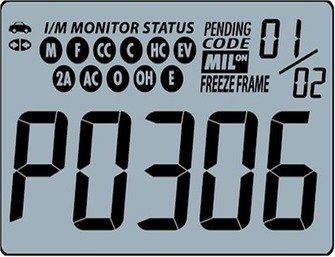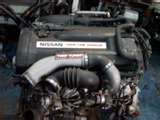
Engine misfire codes are another common reason for check engine lights to come on. This is one of the more serious diagnostic codes a vehicle computer can set.
Drivers with a misfire will often complain about a lack of power, sputtering or rough engine idle. Symptoms can also include a strong surging or bucking if trying to maintain steady highway speeds.
Rotten gas mileage and failed emission testing are a couple side effects, just to name a few. In fact, multiple codes might set in the computers memory if the engine has a miss. A cylinder not firing properly causes rich exhaust. This imbalance is detected by the O2 sensor.
In my opinion you should always tackle the engine miss code first, because it can solve other issues. Here is a very important point to make about this failure code. If you continue to drive around with the malfunction you could eventually cause harm to the engine. It can also ruin the catalytic converter by dumping raw fuel into it.
In the instance of a lean condition, damage to the cylinder head and valve train can also occur. The most common reason for a lean condition is a vacuum leak. Engine misfire codes are in the P0300 range on OBD 2 equipped vehicles.
PO300 stands for random engine misfire. If the computer detects an individual cylinder is not firing properly a P0301 would set for cylinder one. A P0308 would set for cylinder number eight. If you set codes for a misfire on a particular cylinder, consider yourself lucky. The problem is much easier to track down then if you set the random misfire code.
Common Problems Causing Engine Misfire
There can be several different malfunctions that will set a misfire code. You can have a leaking injector. However, even a clogged fuel injector can cause an imbalance in a cylinder’s air fuel mixture. Also a vacuum leak where too much unmeasured air is entering the engine can cause a lean mixture miss.
More often then not you’ll find a basic failure of the ignition system responsible for the problem. These are often related to the spark plugs, a failed ignition coil pack and or secondary ignition wires.
Here is a real world example of this. I had an issue on my friends car where it set a code P0300 for a random misfire. I approached this Nissan check engine light diagnosis in the same manner I normally do. First thing was to clear the code and do a road-test. It ran poorly and the light came back on within about 2 miles. Next I checked for technical service bulletins.

I found only one related to engine misfire codes. It turned out to be exactly what was going on with this car. The automotive technical service bulletin targeted, 1995 – 1998 model years for the Nissan Altima equipped with the four-cylinder engine.
We found the cause of the check engine light problem is an intermittent misfire condition. This can be on one individual cylinder or all of them.
With that said, the root cause is due to water intrusion around the spark plugs. On the Nissan four-cylinder engine the spark plugs fit down inside of tunnels built into the valve cover.
The spark plug wires have tubes and rubber seals that prevent moisture from getting inside. Keep in mind this is an engine you don’t want to take a garden hose too. Nevertheless, the spark plug tubes and rubber seals have a vent to let moisture out. Moisture is created from the temperature differential of a heating and cooling engine against the outside air.

I pulled the number one spark plug wire and saw the tube filled with water. The little check valve vent in the rubber boot that seals against the valve cover was stuck closed.
This allowed water to collect around the spark plug and wire connection. I used compressed air to blow out the water and I replaced the spark plug wires.
These original equipment spark plug wires were about 10 years old and had close to 100,000 miles on them. Nissan makes a fantastic product, but nothing in the automotive business will last forever.
Properly Diagnosing Check Engine Lights
The lesson to be learned from my experience with this Nissan check engine light is that no matter how complicated the vehicle becomes in most cases the failures are located in the most basic systems on the vehicle.Spark plugs and ignition wires have been causing engine misfires ever since the invention of the modern high-energy ignition system. When you set an engine misfire code remember to start with the basics and check things like spark plugs and spark plug wires.
You can also check for service bulletins related to your set diagnostic code. Chances are if you are having a problem many mechanics before you have also discovered the cause of this very same problem. A misfire code can cause engine damage if it’s not diagnosed and repaired.
The automobile will also fail an emissions system test due to an imbalanced exhaust mixture. If you live in California or Arizona you’ll never pass the smog check. This diagnostic code can set as a history code and viewed by the inspection station.Favorite this engine misfire page or share with friends having car problems.
This Nissan check engine light and engine misfire codes page is just one of my many articles from the help section. Learn more about common problems that may cause a service engine light to illuminate visit my page on how to repair check engine lights.
Looking for one on one help with specific car problems? This next link takes you to the auto repair help page.
Learn more about this automotive website and the middle-aged car mechanic that built it on the home page. This next link will take you there and will explain why this car mechanic thinks. You can repair your own vehicle with some quality automotive repair advice.

